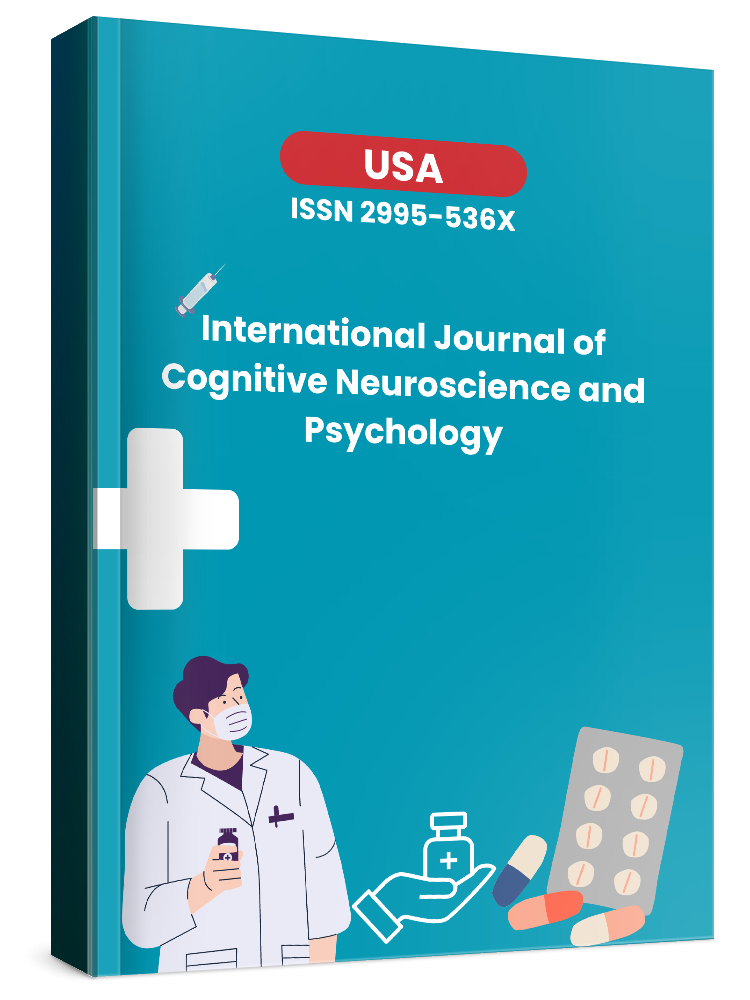Abstract
The limits of the human mind's capacity to communicate without the aid of electronic and physical media are a vital question in an era of ever-increasing digital communication. This study looks at a fictitious experiment designed to see if two people might communicate directly in their minds without the use of any digital or physical communication tools. A fictitious experimental model was created by calculating the probability that the other party would receive similar simple mental symbols and images sent by mental concentration.
The idea that human consciousness may have a quantitative or spatial characteristic that permits communication outside of conventional media is supported by hypothetical results showing that a percentage of participants were able to send or receive mental content with an accuracy higher than chance. The study opens up new research directions for future brain communication studies and examines the phenomenon's scientific context.
References
1. Radin, D. (2006). Entangled Minds: Extrasensory Experiences in a Quantum Reality. Paraview Pocket Books.
2. Persinger, M. A., & Koren, S. A. (2001). “Experimental evidence for interbrain communication.” Neuroscience Letters.
3. Sheldrake, R. (2013). The Sense of Being Stared At and Other Aspects of the Extended Mind. Crown Publishers.
4. Hinterberger, T., et al. (2014). “Brain-to-brain communication: hypotheses and experimental approaches.” Frontiers in Human Neuroscience.
5. Tressoldi, P. E., et al. (2015). “Meta-analysis of telepathy experiments: A review of the evidence.” Journal of Parapsychology.
6. Hansen K, Hofling V, Kroner-Borowik T, et al. (2013) Efficacy of psy- chological interventions aiming to reduce chronic nightmares: A meta-analysis. Clin Psychol Rev 33: 146–155.
7. Rutty GN, Brogdon G, Dedouit F, Grabherr S, Hatch GM, Jackowski C, et al.. Terminology used in publications for post-mortem cross-sectional imaging. Int J Legal Med 2013; 127: 465–66. doi: 10.1007/s00414-012-0782-7 [PubMed] [CrossRef] [Google Scholar]
8. Donchin Y, Rivkind AI, Barziv J, Hiss J, Almog J, Drescher M. Utility of postmortem computed-tomography in trauma victims. J Trauma 1994; 37: 552–56. [PubMed] [Google Scholar]
9. Wichmann D, Obbelode F, Vogel H, Hoepker WW, Nierhaus A, Braune S, et al.. Virtual autopsy as an alternative to traditional medical autopsy in the intensive care unit: a prospective cohort study. Ann Intern Med 2012; 156: 123–30. doi: 10.7326/0003-4819-156-2-201201170-00008 [PubMed] [CrossRef] [Google Scholar]
10. Roberts IS, Benamore RE, Benbow EW, Lee SH, Harris JN, Jackson A, et al.. Post-mortem imaging as an alternative to autopsy in the diagnosis of adult deaths: a validation study. Lancet 2012; 379: 136–42. doi: 10.1016/S0140-6736(11)61483-9 [PMC free article] [PubMed] [CrossRef] [Google Scholar]
11. Kasahara S, Makino Y, Hayakawa M, Yajima D, Ito H, Iwase H. Diagnosable and non-diagnosable causes of death by postmortem computed tomography: a review of 339 forensic cases. Leg Med 2012; 14: 239–45. [PubMed] [Google Scholar]
12. Saunders SL, Morgan B, Raj V, Rutty GN. Post-mortem computed tomography angiography: past, present and future. Forensic Sci Med Pathol 2011; 7: 271–77. doi: 10.1007/s12024-010-9208-3 [PubMed] [CrossRef] [Google Scholar]
13. O'Donnell CJ, Woodford N. Imaging the dead. Can supplement but not replace autopsy in medicolegal death investigation. BMJ 2010; 341: c7415. [PubMed] [Google Scholar]
14. Singleton AC. Roentgenological identification of victims of “Noronic” disaster. Am J Roentgenol Radium Ther 1951; 66: 375–84. [PubMed] [Google Scholar]
15. Nye PJ, Tytle TL, Jarman RN, Eaton BG. The role of radiology in the Oklahoma City bombing. Radiology 1996; 200: 541–43. doi: 10.1148/radiology.200.2.8685354 [PubMed] [CrossRef] [Google Scholar]
16. Thali MJ, Markwalder T, Jackowski C, Sonnenschein M, Dirnhofer R. Dental CT imaging as a screening tool for dental profiling: advantages and limitations. J Forensic Sci 2006; 51: 113–19. doi: 10.1111/j.1556-4029.2005.00019.x [PubMed] [CrossRef] [Google Scholar]
17. Ruder TD, Kraehenbuehl M, Gotsmy WF, Mathier S, Ebert LC, Thali MJ, et al.. Radiologic identification of disaster victims: a simple and reliable method using CT of the paranasal sinuses. Eur J Radiol 2012; 81: e132–38. doi: 10.1016/j.ejrad.2011.01.060 [PubMed] [CrossRef] [Google Scholar]
18. Riepert T, Ulmcke D, Schweden F, Nafe B. Identification of unknown dead bodies by X-ray image comparison of the skull using the X-ray simulation program FoXSIS. Forensic Sci Int 2001; 117: 89–98. [PubMed] [Google Scholar]
19. Riepert T, Ulmcke D, Jendrysiak U, Rittner C. Computer-assisted simulation of conventional roentgenograms from three-dimensional computed tomography (CT) data–an aid in the identification of unknown corpses (FoXSIS). Forensic Sci Int 1995; 71: 199–204.
20. Brough AL, Rutty GN, Black S, Morgan B. Post-mortem computed tomography and 3D imaging: anthropological applications for juvenile remains. Forensic Sci Med Pathol 2012; 8: 270–79. doi: 10.1007/s12024-012-9344-z .
21. Robinson C, Eisma R, Morgan B, Jeffery A, Graham EA, Black S, et al.. Anthropological measurement of lower limb and foot bones using multi-detector computed tomography. J Forensic Sci 2008; 53: 1289–95. doi: 10.1111/j.1556-4029.2008.00875.x .



